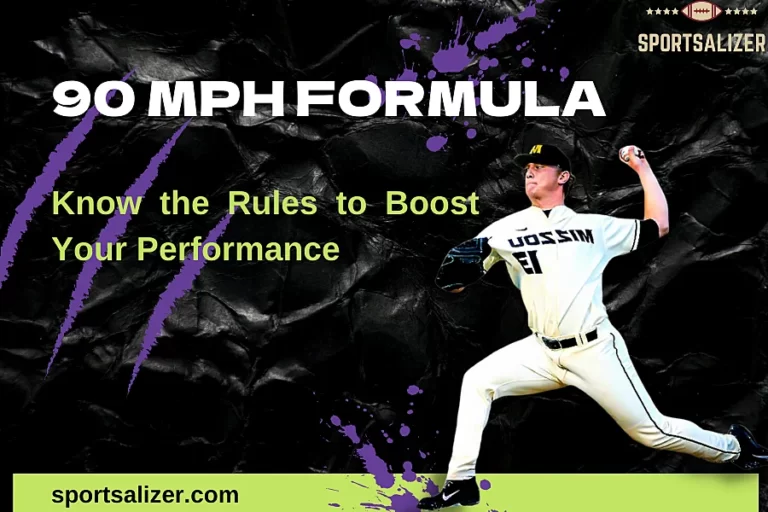Spark Catch Baseball: Taking the Game to New Heights

Baseball, often hailed as America’s favorite pastime, has evolved over the years. From its humble beginnings in the 18th century to becoming a global phenomenon, the sport has undergone numerous changes in terms of rules, equipment, and training techniques. In recent times, a revolutionary training method called “Spark Catch Baseball” has gained popularity among players and coaches alike. This article explores the concept of Spark Catch Baseball, its benefits, and how it is changing the game.

Contents
- 1 What is Spark Catch Baseball?
- 2 The Benefits of Spark Catch Baseball
- 3 How Spark Catch Baseball Works
- 4 Spark Catch Baseball Equipment and Gear Recommendations
- 5 Spark Catch Baseball Exercises for Developing Arm Strength and Accuracy
- 6 Spark Catch Baseball for Outfielders: Techniques and Drills
- 7 Incorporating Spark Catch Baseball into Team Warm-up Routines
- 8 Spark Catch Baseball for Improving Throwing Mechanics and Arm Speed
- 9 FAQs
- 10 Conclusion
- 11 Trending Now
What is Spark Catch Baseball?
Spark Catch Baseball is a training technique that combines traditional catching drills with cutting-edge technology. It involves the use of specialized equipment, such as sensor-equipped baseballs and virtual reality (VR) goggles, to enhance a player’s catching skills and overall performance. The term “spark” refers to the moment when the ball makes contact with the catcher’s mitt, creating a burst of energy and excitement.
The Benefits of Spark Catch Baseball
- Improved Hand-Eye Coordination: Spark Catch Baseball focuses on enhancing a player’s hand-eye coordination. By using sensor-equipped baseballs, players can track the ball’s trajectory more accurately, improving their ability to time their catches.
- Enhanced Reaction Time: Reaction time is crucial in baseball, especially for catchers who need to quickly respond to pitches and make split-second decisions. Spark Catch Baseball helps players sharpen their reaction time by presenting them with realistic game scenarios through VR simulations.
- Increased Focus and Concentration: Spark Catch Baseball requires players to maintain intense focus and concentration throughout the training sessions. By immersing players in realistic game situations using VR technology, it helps them develop mental resilience and the ability to block out distractions.
- Advanced Pitch Recognition: Spark Catch Baseball assists catchers in honing their pitch recognition skills. The sensor-equipped baseballs can simulate different pitch types, speeds, and movements, allowing catchers to familiarize themselves with various pitching styles they might encounter in real games.
- Data-Driven Performance Analysis: One of the unique aspects of Spark Catch Baseball is its ability to provide data-driven performance analysis. The sensor-equipped baseballs collect valuable data on metrics such as catching efficiency, reaction time, and accuracy. This data can be analyzed to identify areas for improvement and tailor training programs accordingly.
How Spark Catch Baseball Works
Spark Catch Baseball involves a combination of physical drills and technology-driven simulations. Here’s a breakdown of how the training typically unfolds:
- Physical Drills: Players engage in traditional catching drills, focusing on fundamentals such as footwork, positioning, and glove mechanics. These drills help build a strong foundation for catching skills.
- Virtual Reality Simulations: Players put on VR goggles and enter a virtual baseball field. Through the VR simulations, they face realistic game scenarios, including different pitch types, speeds, and locations. The sensor-equipped baseballs provide haptic feedback, giving players a realistic feel when catching the virtual pitches.
- Performance Analysis: The sensor-equipped baseballs capture data on various performance metrics, such as the speed and accuracy of catches. Coaches and players can review this data to identify strengths, weaknesses, and areas for improvement.
- Targeted Training: Based on the performance analysis, coaches can tailor training programs to address specific needs. For example, if a player struggles with catching high-speed pitches, the training can focus on improving reaction time and hand speed.

The Future of Spark Catch Baseball
As technology continues to advance, Spark Catch Baseball is poised to evolve even further. Here are some potential advancements that could shape the future of this training technique:
- Artificial Intelligence Integration: Artificial intelligence (AI) could play a significant role in Spark Catch Baseball. AI algorithms could analyze the collected data in real-time, providing instant feedback and suggestions for improvement.
- Immersive Training Environments: Virtual reality technology could advance to create even more immersive training environments. Players might find themselves virtually catching pitches from famous pitchers or experiencing high-pressure game situations.
- Wearable Technology: With the rise of wearable technology, future iterations of Spark Catch Baseball could incorporate smart gloves or sensors embedded in catcher’s gear. These devices could provide real-time feedback on catching technique and performance.
- Expanded Application to Other Positions: While Spark Catch Baseball initially focuses on catchers, the training method could potentially extend to other positions, such as outfielders or infielders. Adapting the technology to suit different defensive roles could revolutionize baseball training as a whole.
Spark Catch Baseball Equipment and Gear Recommendations
When it comes to Spark Catch Baseball, having the right equipment and gear is essential for optimal performance. Here are some recommendations:
- Baseballs: Choose high-quality baseballs that are designed for durability and consistent performance. Look for official league-approved balls that meet the required standards.
- Catcher’s Gear: For catchers, it’s crucial to have the appropriate protective gear, including a catcher’s helmet, chest protector, leg guards, and a sturdy mitt. Invest in gear that offers excellent protection without hindering mobility.
- Gloves: A well-fitting glove is crucial for both catchers and outfielders. Catchers should have a mitt with extra padding and a deep pocket for catching pitches, while outfielders may benefit from a larger glove with a shallow pocket for easier ball retrieval.
- Throwing Aids: Various throwing aids can help improve arm strength, accuracy, and mechanics. Look for tools like weighted baseballs, throwing targets, and resistance bands specifically designed for baseball training.
- Training Nets: Nets provide a controlled environment for catching and throwing drills. Invest in a sturdy net that is large enough to accommodate different training exercises and durable enough to withstand intense use.
- Training Aids: Consider incorporating additional training aids such as agility cones, speed ladders, and reaction balls to enhance footwork, speed, and reaction time.
Spark Catch Baseball Exercises for Developing Arm Strength and Accuracy
To develop arm strength and accuracy in Spark Catch Baseball, incorporate the following exercises into your training routine:
- Long Toss: Start with a partner or a target at a moderate distance. Gradually increase the distance as your arm strength improves. Focus on maintaining proper throwing mechanics and hitting your target consistently.
- Resistance Band Workouts: Use resistance bands to perform various arm exercises, such as band pulls, rotational exercises, and shoulder strengthening exercises. These exercises help build arm strength and stability.
- Medicine Ball Throws: Incorporate medicine ball throws into your training routine. Perform exercises like overhead throws, chest passes, and rotational throws to improve power and transfer of energy from the lower body to the arm.
- Interval Throwing: Practice interval throwing, which involves throwing at varying distances and intensities. This exercise helps improve arm endurance and accuracy in different game situations.
- Plyometric Exercises: Include plyometric exercises like medicine ball slams, clap push-ups, and explosive throws to develop power and explosiveness in your throwing motion.
Spark Catch Baseball for Outfielders: Techniques and Drills
Outfielders play a crucial role in Spark Catch Baseball, and mastering specific techniques and drills can enhance their performance. Here are some techniques and drills for outfielders:
- Positioning and Footwork: Work on proper positioning and footwork to get a good jump on fly balls. Practice reading the trajectory of the ball off the bat and take efficient routes to the ball.
- Communication: Develop effective communication skills with other outfielders and infielders to avoid collisions and maximize defensive coverage. Use verbal cues, hand signals, and eye contact to establish clear communication.
- Catching Fly Balls: Practice tracking and catching fly balls from various angles and distances. Work on judging the depth, speed, and spin of the ball to make accurate catches.
- Throwing Mechanics: Focus on proper throwing mechanics to ensure accurate and strong throws from the outfield. Incorporate drills that emphasize proper arm action, footwork, and follow-through.
- Cutoffs and Relays: Practice cutoffs and relays to improve your ability to make quick and accurate throws to the appropriate base. Work on positioning yourself correctly and executing precise throws under pressure.
Incorporating Spark Catch Baseball into Team Warm-up Routines
Including Spark Catch Baseball exercises in your team’s warm-up routine can help prepare players for practice or games. Here’s how to incorporate it:
- Dynamic Stretching: Begin with a dynamic stretching routine to warm up the muscles involved in throwing and catching. Perform arm circles, trunk rotations, walking lunges, and high knees.
- Light Toss and Catch: Start with a light game of catch, gradually increasing the intensity and distance. This helps loosen up the arm and improves hand-eye coordination.
- Catcher’s Pop-up Drills: Have catchers practice pop-up drills to improve their ability to catch foul pop-ups. This drill also helps infielders and outfielders communicate and react to pop-up situations.
- Outfield Fly Ball Drills: Incorporate fly ball drills for outfielders to warm up their tracking and catching abilities. Hit balls to different parts of the outfield, varying the height, distance, and trajectory.
- Infielder’s Quick Hands: For infielders, include quick hands drills where they practice fielding ground balls and making swift, accurate throws to the appropriate base.
Spark Catch Baseball for Improving Throwing Mechanics and Arm Speed
To enhance throwing mechanics and increase arm speed in Spark Catch Baseball, try the following exercises:
- Arm Circles and Shoulder Mobility Exercises: Begin with arm circles and shoulder mobility exercises to warm up the shoulder joint and improve range of motion. Perform exercises like shoulder rotations and pendulum swings.
- Weighted Baseball Throws: Use weighted baseballs during throwing drills to strengthen the arm and improve arm speed. Start with lighter-weight balls and gradually progress to heavier ones.
- Towel Drills: Practice towel drills to reinforce proper arm action and follow-through. Grip a towel with your throwing hand, go through the throwing motion, and focus on snapping the towel forward.
- One-Knee Throws: Perform one-knee throws to isolate the upper body and focus on generating power from the torso and arm. This exercise helps improve arm speed and throwing mechanics.
- Pitcher-Specific Drills: Incorporate pitcher-specific drills like long toss, mound work, and bullpen sessions to develop proper pitching mechanics, arm strength, and velocity.
FAQs
What makes Spark Catch Baseball different from traditional catching drills?
Spark Catch Baseball combines traditional catching drills with advanced technology. While traditional drills focus on fundamental skills like footwork and glove mechanics, Spark Catch Baseball incorporates sensor-equipped baseballs and virtual reality simulations. This technology provides a more immersive and realistic training experience, enhancing hand-eye coordination, reaction time, and pitch recognition.
How does virtual reality (VR) play a role in Spark Catch Baseball?
Virtual reality is a key component of Spark Catch Baseball. Players wear VR goggles and enter a virtual baseball field where they face realistic game scenarios. Through VR simulations, they encounter various pitch types, speeds, and locations, allowing them to practice catching in different game-like situations. The sensor-equipped baseballs provide haptic feedback, creating a more realistic feel when catching the virtual pitches.
Can Spark Catch Baseball help improve catching performance for players in other positions?
While Spark Catch Baseball primarily focuses on catchers, the training technique has the potential to extend to players in other positions. Adapting the technology to suit different defensive roles, such as outfielders or infielders, could enhance their catching skills and overall performance. The principles of hand-eye coordination, reaction time, and pitch recognition are valuable for players in any defensive position.
How does Spark Catch Baseball provide data-driven performance analysis?
Spark Catch Baseball utilizes sensor-equipped baseballs to collect data on various performance metrics. These metrics include catching efficiency, reaction time, and accuracy. Coaches and players can review this data to gain insights into strengths, weaknesses, and areas for improvement. The data-driven analysis helps tailor training programs to address specific needs and optimize player performance.
What are the potential future advancements for Spark Catch Baseball?
The future of Spark Catch Baseball holds exciting possibilities. Some potential advancements include the integration of artificial intelligence (AI) for real-time analysis and feedback, the development of more immersive training environments, and the incorporation of wearable technology, such as smart gloves or sensors in catcher’s gear. These advancements could further enhance the training experience, making it even more effective and impactful for players of all positions.
Conclusion
Spark Catch Baseball represents a fusion of traditional catching drills and cutting-edge technology. By combining physical drills with virtual reality simulations and sensor-equipped baseballs, this training technique enhances hand-eye coordination, reaction time, focus, and pitch recognition. As technology continues to advance, the future of Spark Catch Baseball holds exciting possibilities for players and coaches. With AI integration, immersive training environments, and wearable technology, this training method has the potential to revolutionize baseball training, not just for catchers but for players in various positions. Spark Catch Baseball is poised to take the game to new heights, helping players unlock their full potential on the field.










